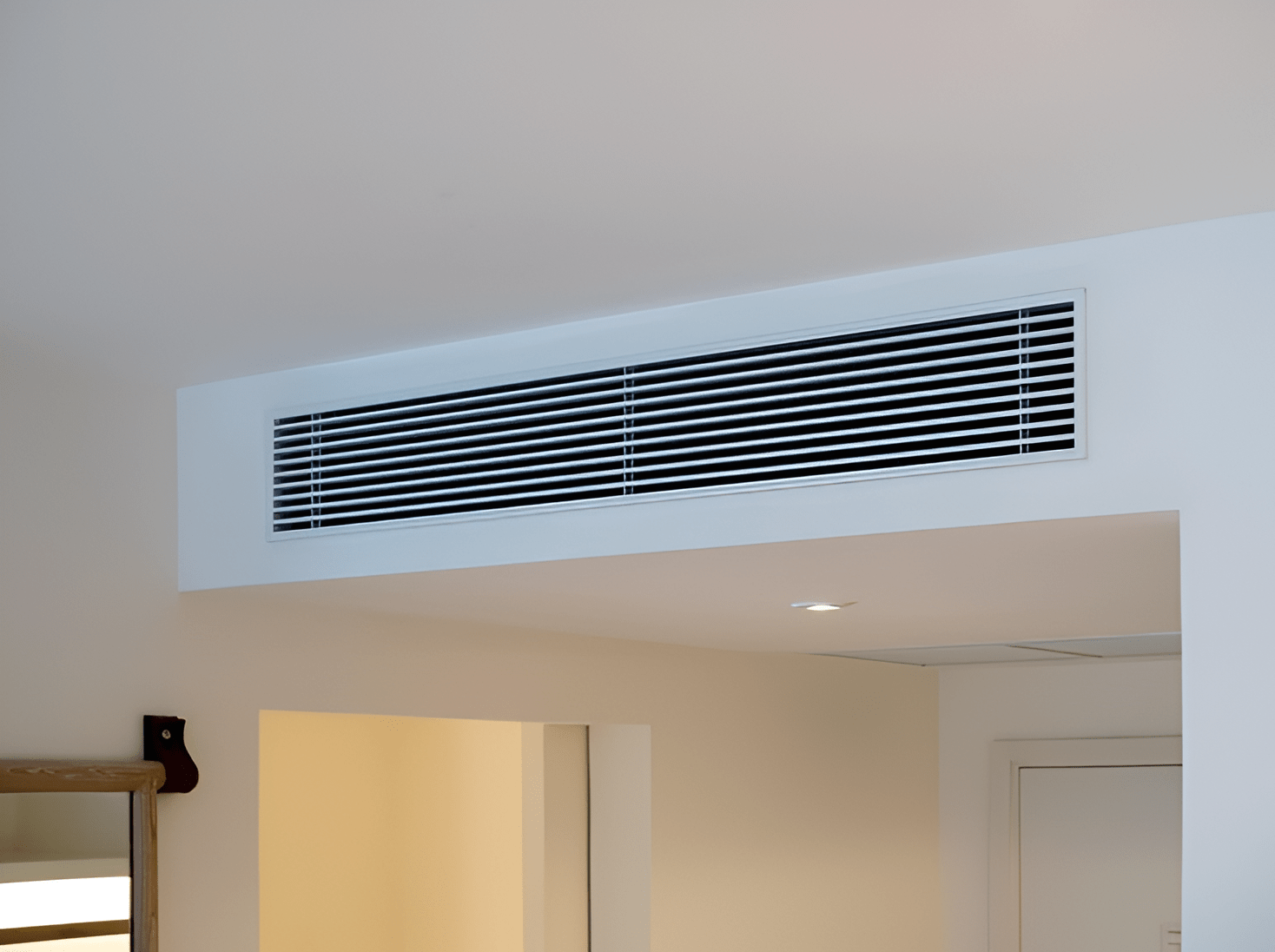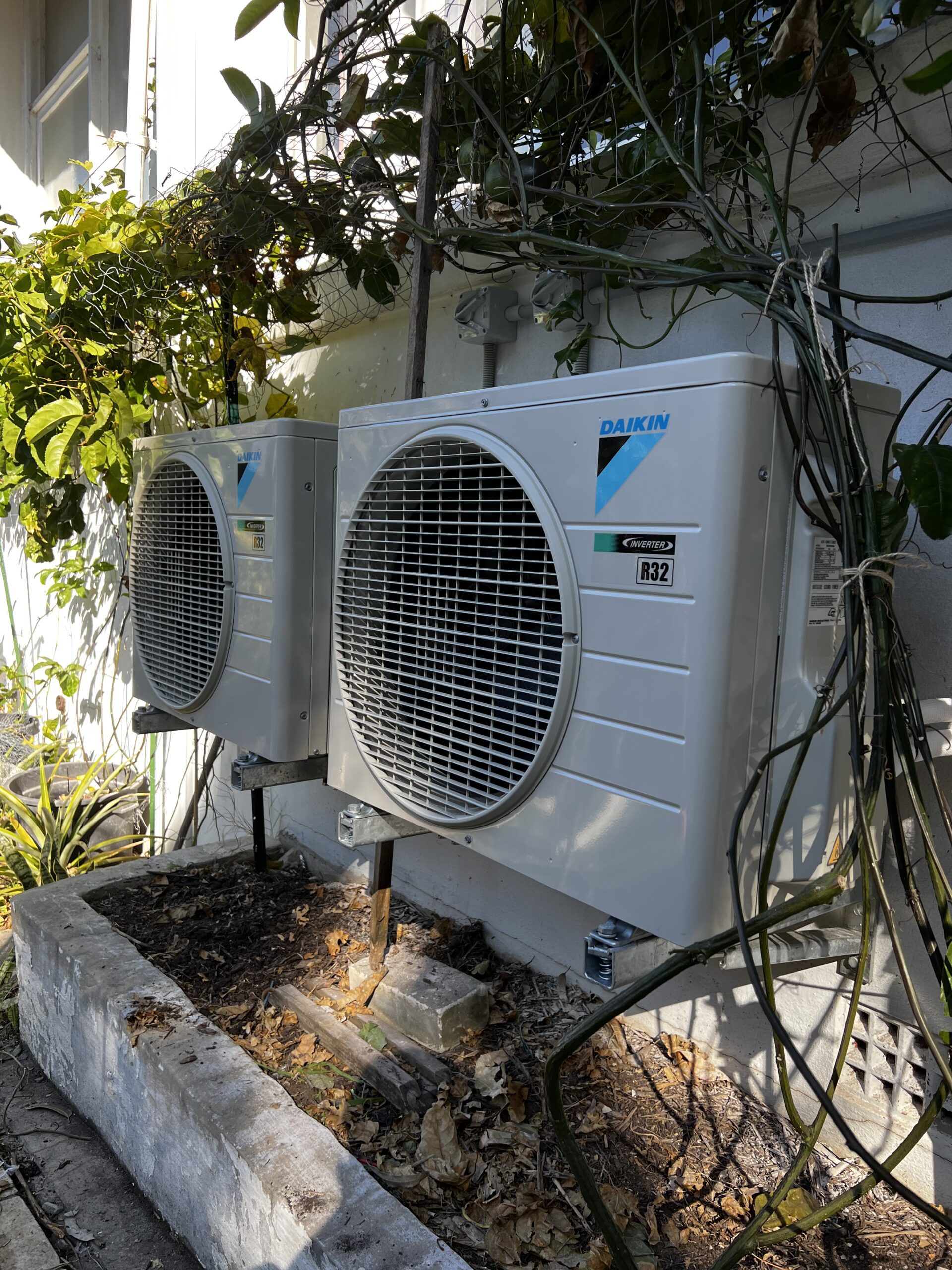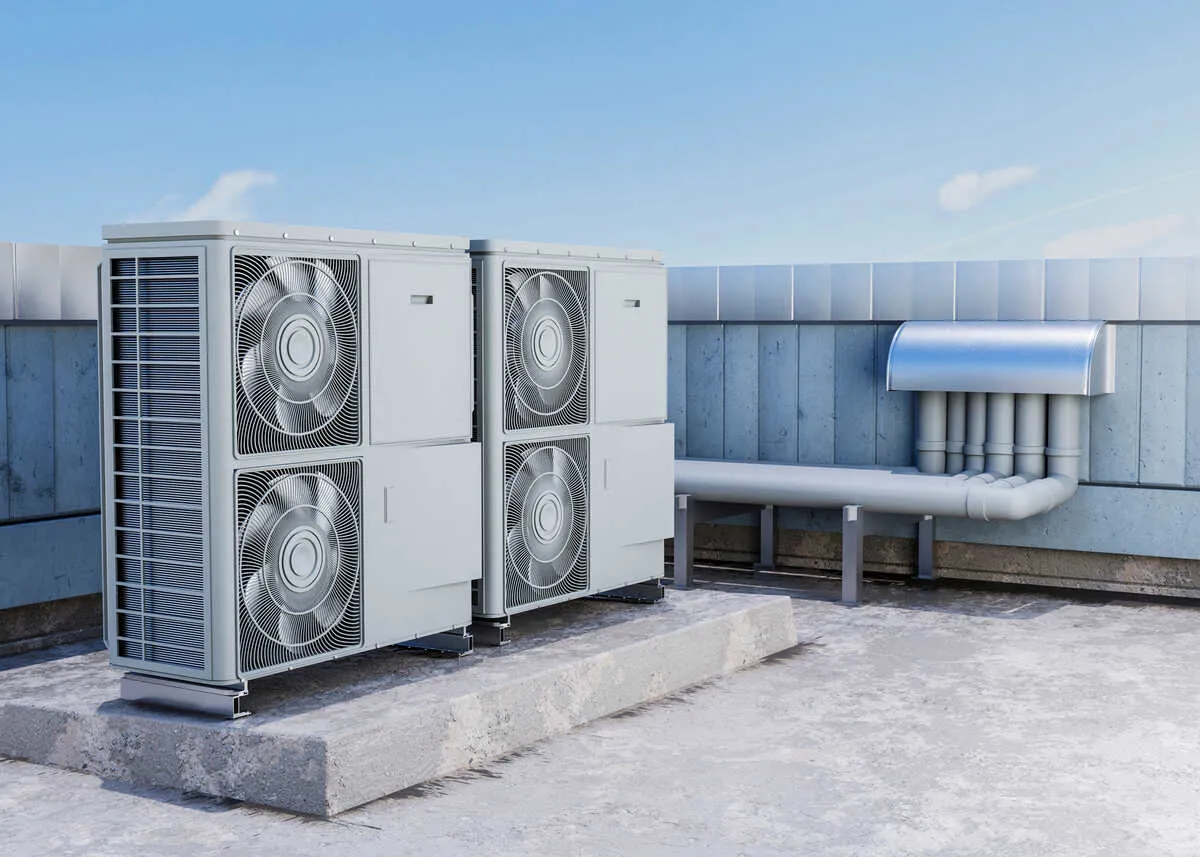Introduction
Choosing the right air conditioning system for your home is a significant decision that impacts comfort, energy efficiency, and long-term costs. In 2025, homeowners are presented with a variety of advanced cooling solutions, with split system and ducted air conditioners being two of the most popular choices. Each system offers distinct advantages and disadvantages, making the ‘best’ option highly dependent on individual needs, home structure, and budget. This comprehensive guide will delve into the intricacies of both split system and ducted AC units, helping you make an informed decision for optimal home cooling.
1. Understanding Split System Air Conditioners
Split system air conditioners are a popular choice for cooling individual rooms or specific zones within a home. They are characterised by having two main components: an outdoor unit (condenser) and one or more indoor units (evaporators).
1.1 How Split Systems Work
A split system operates by drawing warm air from the room into the indoor unit, where it passes over a cold evaporator coil. The refrigerant inside the coil absorbs the heat, and the cooled air is then circulated back into the room. The heated refrigerant then travels to the outdoor unit, where the heat is released into the atmosphere through the condenser coil. This cycle continues until the desired temperature is reached. The two units are connected by refrigerant lines and electrical cables, eliminating the need for extensive ductwork.
1.2 Advantages of Split Systems
Split systems offer several compelling advantages. Firstly, their installation is generally less complex and more affordable than ducted systems, making them ideal for existing homes or targeted cooling needs. Secondly, they provide excellent zoning capabilities, allowing you to cool only the rooms you are using, which can lead to significant energy savings. Thirdly, many modern split systems are highly energy-efficient, boasting high Energy Efficiency Ratio (EER) and Seasonal Energy Efficiency Ratio (SEER) ratings. Lastly, they often come with advanced features like remote control operation, sleep modes, and air purification filters, enhancing user comfort and convenience.
2. Understanding Ducted Air Conditioners
Ducted air conditioning systems provide whole-home cooling from a single, centrally located unit. They are often considered the most discreet and aesthetically pleasing option for climate control.
2.1 How Ducted Systems Work
A ducted AC system consists of a central indoor unit, typically located in the roof space or under the floor, and an outdoor condenser unit. The indoor unit cools the air, which is then distributed throughout the home via a network of ducts installed within the walls, ceilings, or floors. The cooled air exits through discreet vents in each room. Return air ducts draw warm air back to the central unit to be re-cooled, creating a continuous cycle. This system allows for consistent temperature control across multiple rooms or the entire house.
2.2 Advantages of Ducted Systems
Ducted systems offer several key benefits. Their primary advantage is their ability to provide uniform cooling throughout the entire home, ensuring consistent comfort in every room. Aesthetically, they are highly discreet, with only the vents visible, making them blend seamlessly with any interior design. Many ducted systems also offer zoning capabilities, allowing you to control the temperature in different areas of your home independently, which can improve energy efficiency. While the initial air conditioner installation cost can be higher, the comprehensive coverage and integrated design are often preferred for new builds or major renovations.
3. Key Differences: Installation and Aesthetics
The choice between a split system and a ducted AC often comes down to practical considerations like installation complexity, cost, and how the system integrates with your home’s aesthetics.
3.1 Installation Complexity and Cost
Split systems are generally easier and less expensive to install. The process involves mounting the indoor unit on a wall, placing the outdoor unit nearby, and connecting them with refrigerant lines and electrical wiring. This makes them a popular choice for homeowners looking for a quick and relatively affordable cooling solution for specific areas. Ducted systems, on the other hand, require extensive ductwork to be installed throughout the ceiling or floor cavities, which is a more involved and costly process. This makes ducted systems more suitable for new constructions or major renovations where the infrastructure can be integrated seamlessly.
3.2 Visual Impact and Integration
From an aesthetic perspective, ducted systems offer a more discreet solution. Once installed, only the grilles or vents are visible, blending almost invisibly into the ceiling or walls. This provides a clean, uncluttered look that many homeowners prefer. Split systems, while increasingly sleek in design, still involve a visible indoor unit mounted on a wall. While manufacturers offer various designs to complement different interiors, the presence of the indoor unit is undeniable. The choice here often depends on how much you value an unobtrusive cooling solution versus the flexibility and lower upfront cost of a split system.
4. Performance and Efficiency Comparison
When evaluating AC systems, their performance in cooling your home and their energy efficiency are paramount. Both split and ducted systems have different strengths in these areas.
4.1 Zoned Cooling and Energy Efficiency
Split systems excel in zoned cooling, allowing you to cool only the rooms you are actively using. This targeted approach can lead to significant energy savings, as you’re not wasting energy cooling unoccupied areas. Multi-split systems, which connect multiple indoor units to a single outdoor unit, further enhance this capability, providing individual temperature control for different rooms. This granular control over cooling can be highly energy-efficient, especially in homes with varying occupancy patterns.
4.2 Whole-Home Comfort and Air Quality
Ducted systems are renowned for providing consistent, whole-home comfort. Because air is distributed evenly through a network of ducts, there are no hot or cold spots, ensuring a uniform temperature throughout your entire living space. Additionally, ducted systems often incorporate more sophisticated filtration systems, which can significantly improve indoor air quality by removing dust, allergens, and other pollutants. This makes them a preferred choice for those seeking comprehensive climate control and a healthier indoor environment.
5. Cost Considerations
The financial aspect is a major factor in deciding between a split system and a ducted AC. This includes not only the initial purchase and installation but also the ongoing operational expenses.
5.1 Upfront Installation Costs
Generally, split systems have a lower upfront cost, especially for single-room installations. A basic split system unit and its installation can be significantly more affordable than a ducted system. However, if you need to install multiple split systems to cover several rooms, the cumulative cost can start to approach that of a ducted system. Ducted systems, due to the extensive ductwork and more complex installation process, typically have a higher initial investment. This is particularly true for existing homes where retrofitting ductwork can be a major undertaking.
5.2 Running and Maintenance Costs
Running costs depend heavily on usage patterns, energy efficiency ratings (EER/SEER), and electricity prices. Split systems can be more energy-efficient for zoned cooling, as you only cool the areas you are using. Ducted systems, while offering whole-home comfort, can incur higher running costs if not properly zoned or if used to cool unoccupied areas. Maintenance costs for both systems involve regular servicing, filter replacements, and potential repairs. While split systems might have simpler individual repairs, ducted systems can have more complex issues related to ductwork or central components. Regular air conditioner repairs and maintenance are crucial for both to ensure longevity and efficiency.
6. Suitability for Different Homes
The ideal AC system often depends on the type, size, and layout of your home, as well as your specific cooling needs.
6.1 Best for Smaller Spaces or Additions
Split systems are an excellent choice for smaller homes, apartments, or specific room additions where extending existing ductwork is impractical or too costly. They are perfect for cooling a single bedroom, a living area, or a home office. Their flexibility also makes them suitable for homes where only certain areas require cooling, allowing for targeted comfort without the need to cool the entire house. If you’re looking to cool a new extension or a granny flat, a split system often provides the most straightforward and cost-effective solution.
6.2 Ideal for New Builds and Larger Homes
Ducted systems are generally the preferred option for new home constructions or large, multi-story homes where a comprehensive, integrated cooling solution is desired. Installing ductwork during the construction phase is far more efficient and less disruptive. For larger homes, a ducted system provides consistent and uniform cooling across all rooms, eliminating hot spots and ensuring comfort throughout. They are also ideal for homeowners who prefer a minimalist aesthetic, as the system is largely hidden from view.
7. Maintenance and Longevity
Regardless of the system you choose, regular maintenance is crucial for ensuring its longevity, efficiency, and reliable operation. Both split and ducted systems require attention to keep them running smoothly.
7.1 Routine Maintenance Requirements
For split systems, routine maintenance typically involves cleaning or replacing air filters every few months, cleaning the indoor unit coils, and ensuring the outdoor unit is free from debris. Ducted systems also require regular filter changes, but their maintenance can be more involved, including inspecting and cleaning ductwork, checking zoning dampers, and servicing the central unit. Professional servicing for both types of systems should be conducted annually to check refrigerant levels, electrical connections, and overall system performance.
7.2 Expected Lifespan and Durability
The lifespan of both split and ducted AC systems can vary depending on the quality of the unit, frequency of use, and consistency of maintenance. On average, both types of systems can last between 10 to 15 years, with some units extending to 20 years with excellent care. Regular professional maintenance plays a significant role in achieving the maximum lifespan and ensuring the system operates efficiently throughout its service life. Neglecting maintenance can lead to premature breakdowns and a shortened lifespan for either system.
8. Smart Features and Control
Modern air conditioning systems, whether split or ducted, come equipped with a range of smart features and control options that enhance convenience, efficiency, and user experience.
8.1 Smart Thermostat Integration
Both split and ducted systems can be integrated with smart thermostats, allowing for remote control via smartphone apps, voice commands, and advanced scheduling. These thermostats can learn your preferences, adjust settings based on occupancy, and even integrate with other smart home devices. This level of control provides unparalleled convenience, allowing you to manage your home’s climate from anywhere, ensuring comfort upon arrival and energy savings when you’re away.
8.2 Advanced Zoning and Automation
While split systems inherently offer zone control, ducted systems can achieve sophisticated zoning through automated dampers in the ductwork. This allows you to divide your home into multiple temperature-controlled zones, each with its own thermostat. Advanced automation features can further optimise energy usage by automatically adjusting temperatures based on time of day, outdoor conditions, or even integration with weather forecasts. This level of customisation ensures that you only cool the areas you need, when you need them, leading to significant energy savings and enhanced comfort.
Conclusion
Deciding between a split system and a ducted AC unit in 2025 boils down to a careful evaluation of your specific needs, home characteristics, and budget. Split systems offer flexibility, lower upfront costs for targeted cooling, and excellent energy efficiency for individual zones. They are ideal for smaller homes, apartments, or additions. Ducted systems, while requiring a higher initial investment, provide superior whole-home comfort, discreet aesthetics, and advanced zoning capabilities, making them perfect for new builds and larger residences. Ultimately, both systems offer effective cooling solutions. The best choice is the one that aligns perfectly with your lifestyle, comfort preferences, and long-term financial goals. Consulting with an HVAC professional can provide tailored advice to ensure you select the optimal system for your home.



